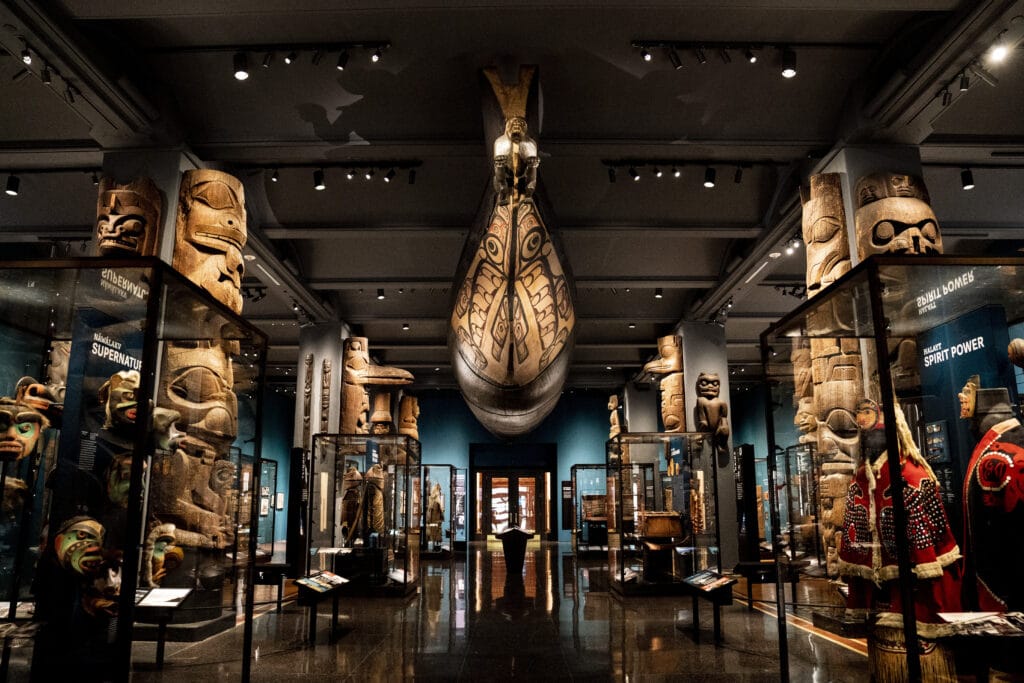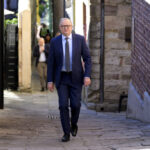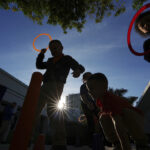Museums are becoming more careful how they portray Native American history, trying to show it in a less biased way instead of a Western offensive manner. The American Museum of Natural History in New York City renovated their Northwest Coast Hall on Friday with hopes of achieving this. The Associated Press has the story:
American Museum of Natural History revamps Native American exhibition
NEW YORK (AP) — In his first visit to the American Museum of Natural History, Morgan Guerin had a list. Not of things he wanted to check out, though — a list of things that he hated.
It started with seeing certain regalia from his Musqueam Indian Band — sacred objects not intended for public display — in the museum’s Northwest Coast Hall.
This wasn’t just any visit. Guerin was there at the museum’s invitation in 2017 for the start of a project to renovate the hall, incorporating Indigenous perspectives. For him and representatives of other Indigenous communities in the Pacific Northwest and western Canada, the 5-year, $19-million renovation of the Northwest Coast Hall, which reopened to the public Friday, was an opportunity to tell their stories themselves.
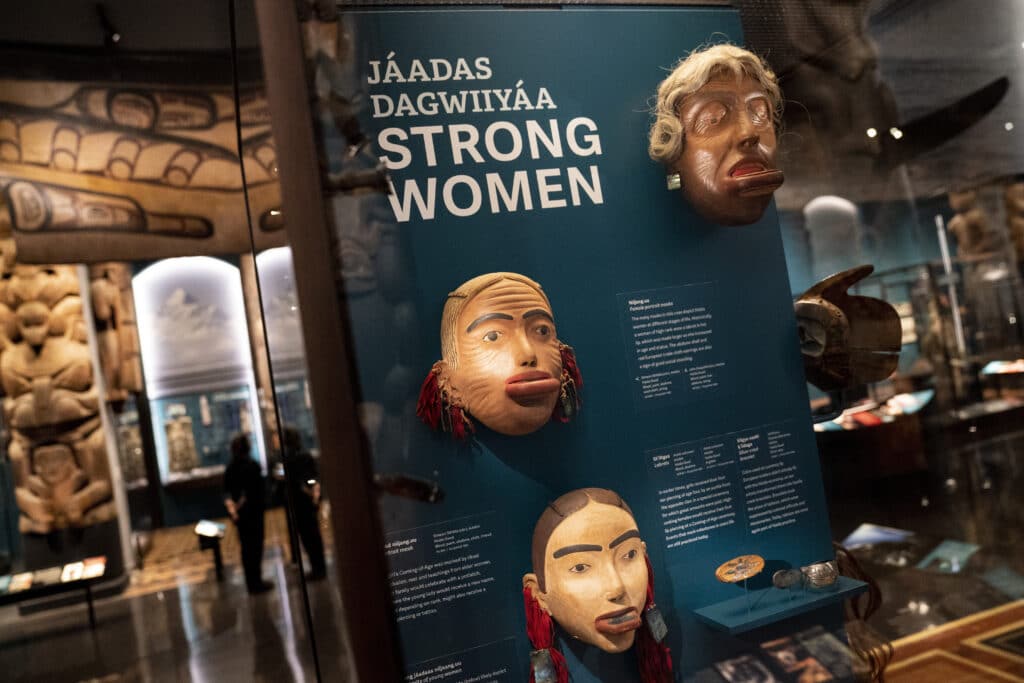
“Our people are very, very tired of being ‘studied,’ because the misconception of who we are has always been the outside community’s downfall,” he said. “We have always been here, ready to tell people who we are.”
The hall was the museum’s first gallery, opened in 1899 under the auspices of Franz Boas, an anthropologist who was deeply interested in the Indigenous cultures of the Northwest and western coastal Canada. Boas was also a proponent of what was then a revolutionary idea that different cultures should be looked at in their own right and not on some kind of comparative scale.
It had largely remained unchanged, though, since the early 1900s. When museum officials decided it was time to renovate, they knew they couldn’t do it without input from the people whose cultures are on display.
“A lot of what we did was trying to bring this historic collection to the 21st century, and that’s by telling new stories with active voices in all of these communities and nations,” said Lauri Halderman, vice president for exhibition.
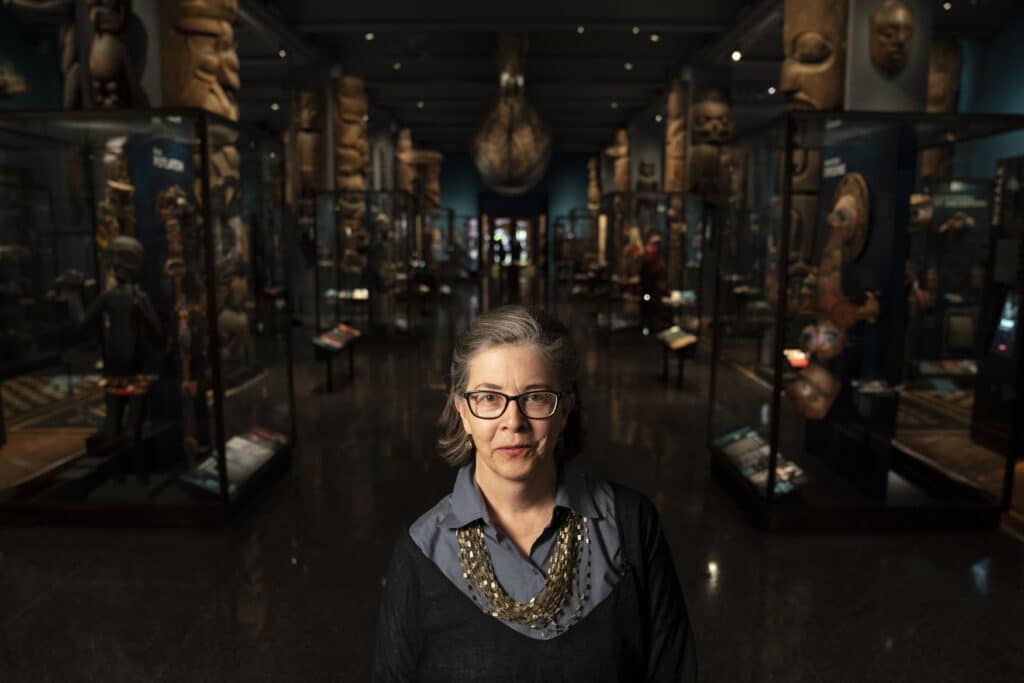
The museum brought together the representatives of the Indigenous communities to talk about what the gallery should contain and what it should look like for the showcase of 10 Pacific Northwest tribal nations.
It wasn’t a simple process, made even less so by the impact of the pandemic with its forcing of remote instead of in-person collaborations.
The hall includes some iconic pieces that anyone who has been to the museum will remember – including a massive 63-foot-long canoe that for decades was placed outside the hall but has now been brought in and suspended from the ceiling as well as several giant carvings. But its new exhibit, items are accompanied by text in both English and Indigenous languages and includes a gallery section showing how younger Indigenous artists are using motifs and designs from prior generations.
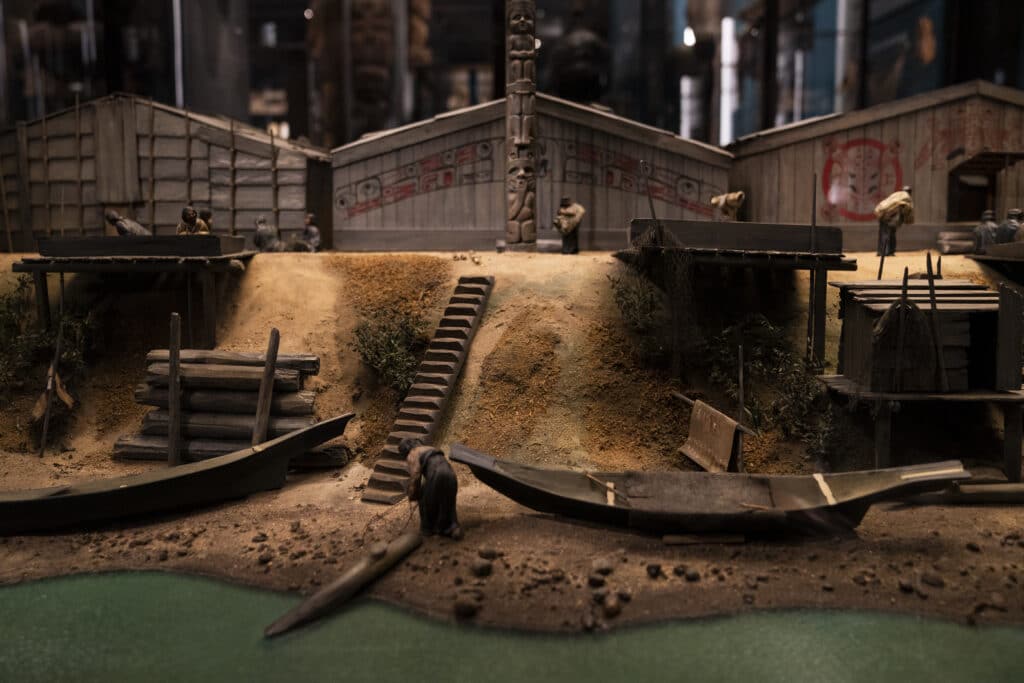
There was also, and continues to be, the fundamental question of whether museums should be holding these collections and trying to tell these stories in the first place, given the role that theft and colonialization has played in building them, and the way Indigenous communities have been treated.
Museums “seem to function as very expensive, and in the case of the American Museum of Natural History, maybe the most expensive, trophy cases in the world,” said Haa’yuups, co-curator of the hall, who is Head of the House of Taḳiishtaḳamlthat-ḥ, of the Huupa‘chesat-ḥ First Nation.
He said, “They seem to have a meta language about them or a meta message, ‘Aren’t we powerful? Don’t we go forth and dominate the world?'”
He saw his involvement as a way to help spur a difference, to get people thinking about whether the items on display would be better served by being with the people they came from.
“Does it make sense to have a bunch of people who have nothing to do with objects, to have them spend their lives managing them?” he said. “Or does it make sense to send those treasures back to the communities where they come from?”
It’s an issue the museum has and is continuing to grapple with, said Peter Whiteley, curator of North American ethnology. He said the institution, which has repatriated items over the years, had decided through the renovation process that it was willing to do some additional limited repatriation and develop greater collaboration between the museum and the native tribes.
Deeper questions notwithstanding, those who took part in the process, both from the Indigenous nations and the museum staff, said it was a valuable one in terms of showing what is possible in terms of collaboration and listening to Indigenous voices.
“The best thing about this, the result of these consultants from the different native tribes,” said David Boxley, representing the Tsimshian tribe, “is that it’s our voice speaking.”
By DEEPTI HAJELA

